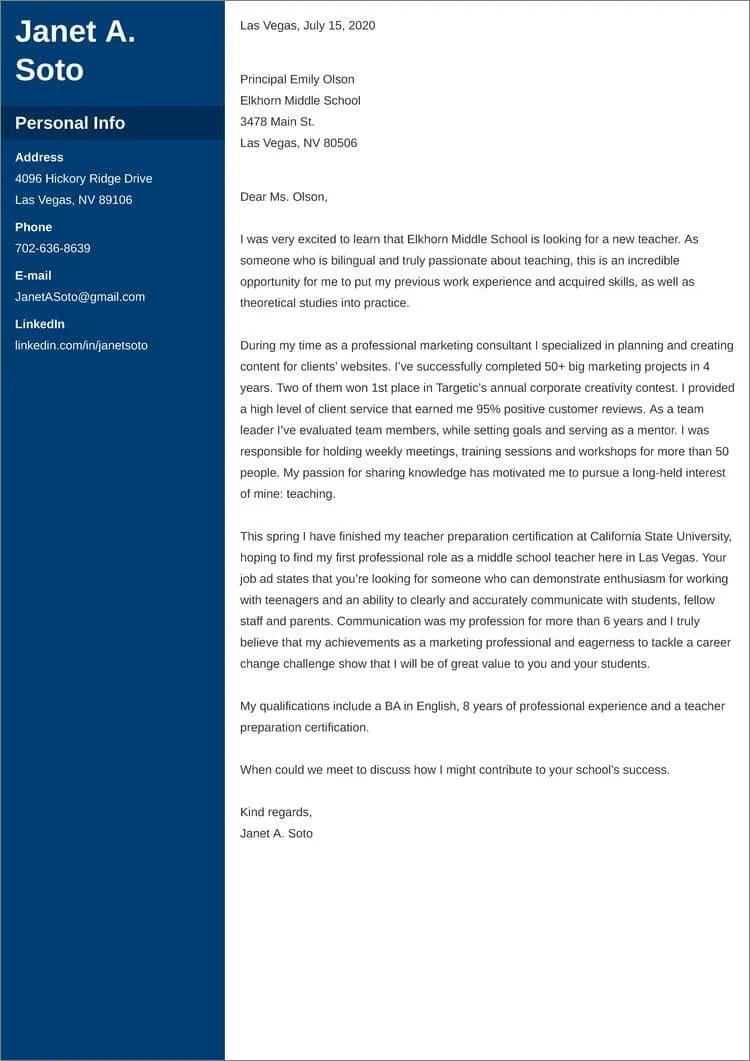Changing careers is a significant step, and your cover letter is your chance to make a strong first impression. Unlike a resume, a cover letter allows you to explain the ‘why’ behind your career change and convince a potential employer that your skills and experience are relevant. It bridges the gap between your past experiences and your future aspirations, making you a compelling candidate for the new role. A well-crafted cover letter tailored to your career change is crucial to landing an interview and ultimately, the job. It demonstrates your understanding of the position and your genuine interest in the company, setting you apart from other applicants who might lack this personalized approach. This guide will show you how to write a powerful cover letter for your career change journey.
Why a Cover Letter Matters for a Career Change
In a career change, a cover letter allows you to tell your story. It provides context to your career shift, explaining why you’re making the transition and how your previous experiences have prepared you for this new path. It gives you a space to connect the dots between your past roles and the skills you’ve developed that are relevant to the new role. Your cover letter also highlights your enthusiasm and commitment to the new field, demonstrating to the employer that you are serious about this transition. Moreover, it offers an opportunity to address any potential concerns an employer might have about your lack of direct experience in the new field. By clearly communicating your motivation, transferable skills, and eagerness to learn, you greatly improve your chances of getting an interview.
Highlighting Transferable Skills
One of the most important things you can do in your cover letter is to emphasize transferable skills. These are the skills you’ve gained in previous roles that are applicable to the job you’re applying for. Focus on skills like communication, problem-solving, leadership, teamwork, and project management. Consider what you’ve learned and achieved in your previous roles, and identify the skills that align with the requirements of the new position. Don’t just list these skills; provide specific examples of how you’ve used them in the past and how they can benefit the employer in the new role. This is the key to showing how your skills from a different industry or role make you a suitable candidate.
Identifying Your Skills
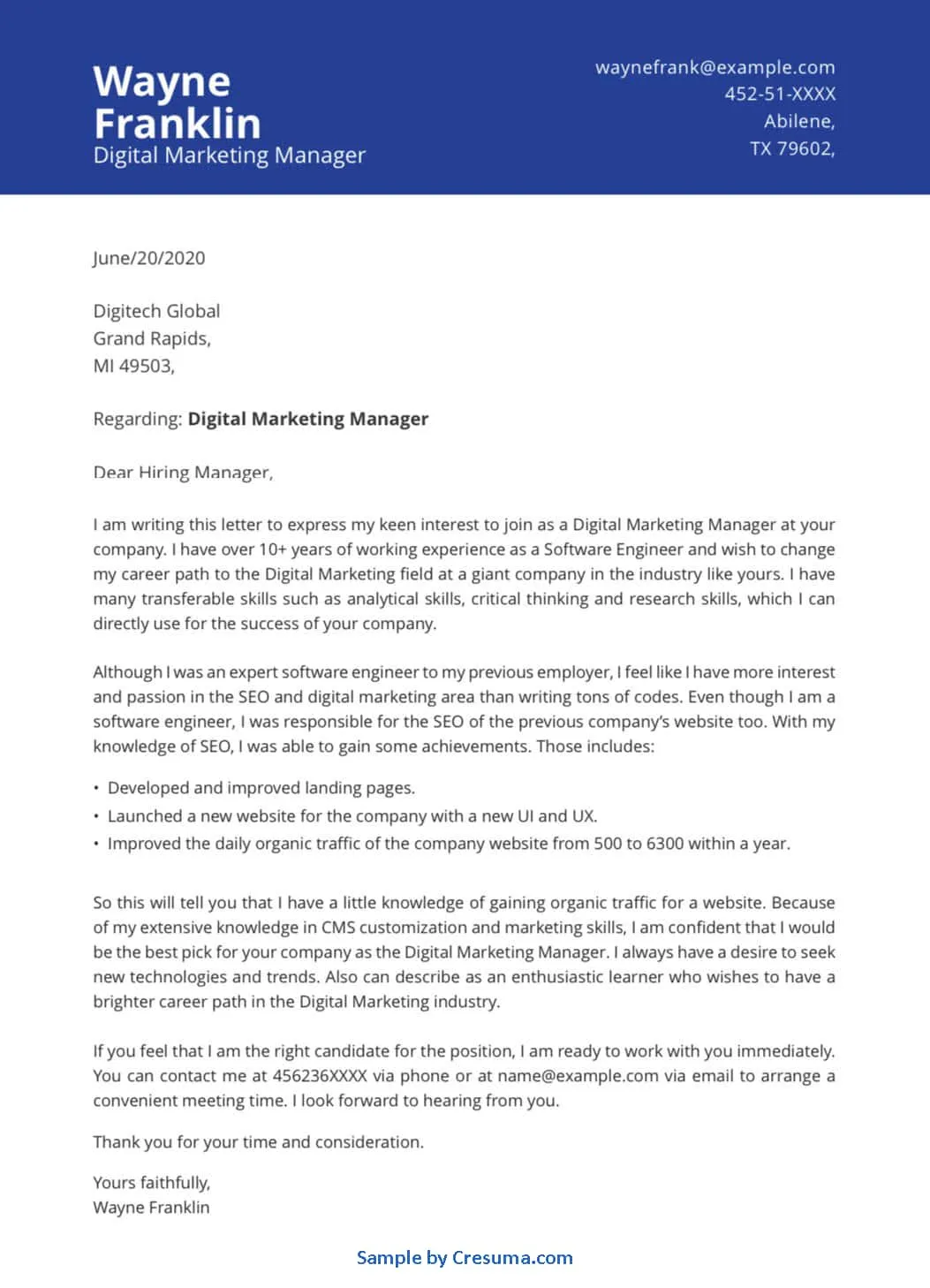
Begin by listing your key skills. Review the job description carefully, and match your skills with the requirements. For example, if the job requires strong communication skills, think about your experience with presentations, writing reports, or interacting with clients. If the job emphasizes project management, showcase your experience in planning, organizing, and executing projects. Use action verbs to describe these skills, such as ‘managed,’ ‘coordinated,’ ‘implemented,’ or ’led.’ Use a skills matrix to find transferable skills from previous jobs and map to the new job to increase your chances of getting hired.
Showcasing Accomplishments
Provide concrete examples of your accomplishments to show that you possess the skills you’ve listed. Describe a situation or project where you successfully used these skills. Use the STAR method (Situation, Task, Action, Result) to provide a clear picture of your achievements. This will allow the hiring manager to see the impact of your work, making your application more persuasive. Quantify your results whenever possible. Numbers and statistics add credibility to your claims and show the tangible value you brought to your previous roles. Also, by showing you took on an issue, the action you took, and the result, you prove that your past experience can be valuable in a career change.
Structuring Your Cover Letter for Career Change
A well-structured cover letter is easy to read and quickly communicates your key qualifications. It should follow a clear and logical format, allowing the employer to easily understand your career change and why you are a great fit for the job. Break it into clear sections, starting with a compelling opening that captures the reader’s attention and sets the tone for the rest of the letter. Follow this with a body that showcases your relevant skills, accomplishments, and enthusiasm for the new role. A strong conclusion should reiterate your interest and call to action. A well-formatted cover letter shows professionalism and attention to detail.
Opening the Cover Letter
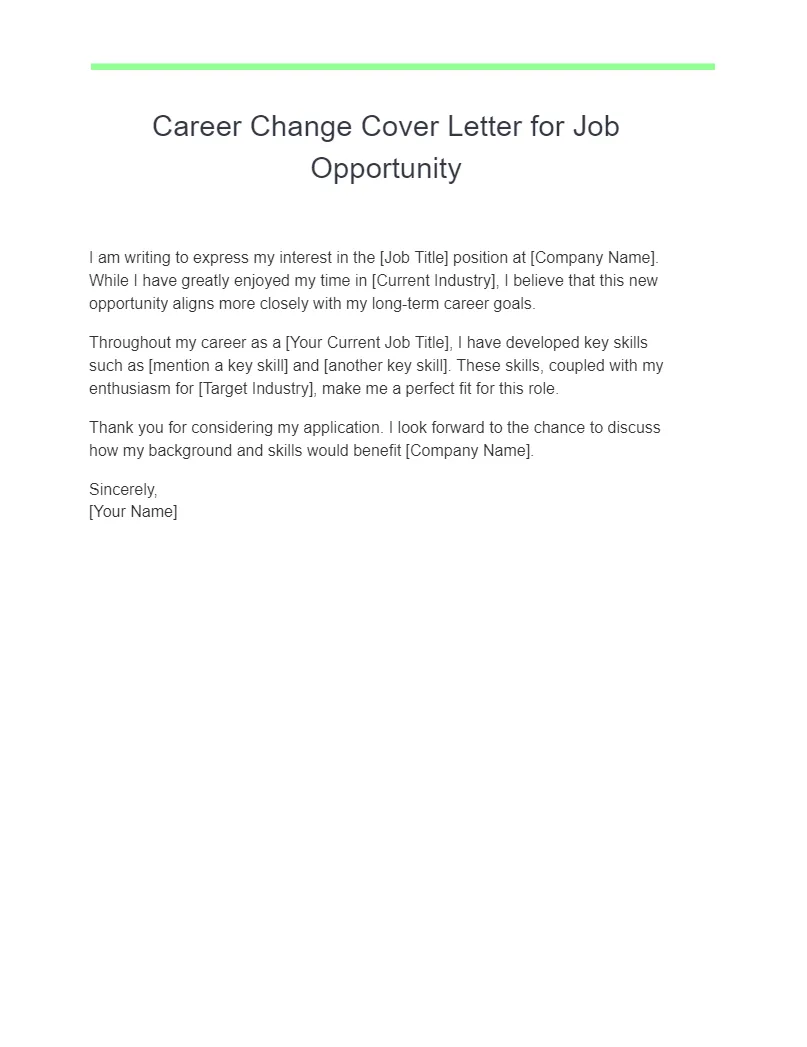
Start with a strong opening that grabs the reader’s attention. Briefly state your intention (applying for a job) and mention the position you’re applying for. Quickly introduce yourself and briefly explain why you are making a career change. You might start by expressing your enthusiasm for the opportunity or highlighting a key skill. If you know someone at the company, mentioning them can add a personal touch. Ensure your opening is concise, professional, and immediately conveys your interest in the role. The goal is to hook the hiring manager from the first sentence and make them want to read on.
Body Paragraphs
The body of your cover letter should showcase your skills and experience and explain your transition in detail. Use separate paragraphs to address your transferable skills, accomplishments, and your motivation for the career change. Provide specific examples to support your claims. Explain how your previous experiences have prepared you for the new role, and how your skills align with the job requirements. Make a compelling case for why you are a great fit, even with a career change. Tailor each paragraph to the specific job description and company requirements to demonstrate your understanding of their needs.
Closing the Cover Letter
Your conclusion should reiterate your interest in the position and the company. Restate your enthusiasm for the opportunity and summarize why you are a strong candidate. Express your eagerness to learn more about the role and the company. End with a call to action, such as requesting an interview or offering to provide additional information. Thank the employer for their time and consideration, and provide your contact information. The closing paragraph should leave the reader with a positive impression and inspire them to take the next step.
The 5 Tips for a Winning Cover Letter
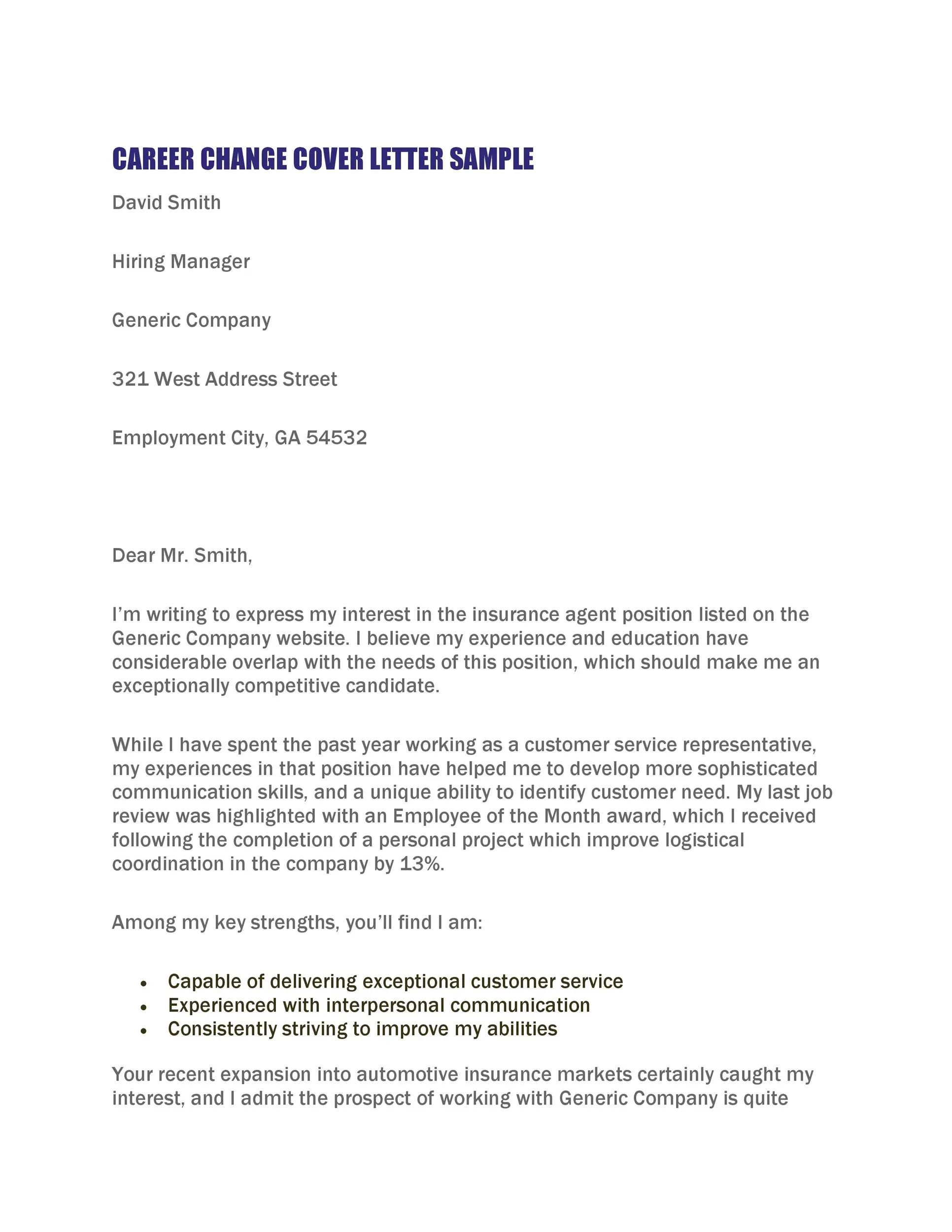
Writing a compelling cover letter can be challenging, but with the right approach and strategies, you can dramatically improve your chances of landing an interview. Here are five essential tips to help you craft a winning cover letter for your career change:
Tip 1 Focus on Transferable Skills
As previously mentioned, emphasize your transferable skills. These are the skills you’ve gained in previous roles that are relevant to the new position. Identify the skills that align with the job description, and provide specific examples of how you’ve used them in the past. This is a crucial element in proving that you’re capable of succeeding in a new role, even without direct experience. Highlighting these transferable skills gives employers the confidence to hire you.
Tip 2 Quantify Your Achievements
Use numbers and statistics to demonstrate the impact of your accomplishments. Quantify your achievements whenever possible. Instead of saying you ‘improved customer satisfaction,’ say you ‘increased customer satisfaction by 15%.’ Providing measurable results is much more compelling than making general statements. Quantifiable achievements will convince an employer that you are truly a good candidate and that you can deliver great results.
Tip 3 Show Enthusiasm and Passion
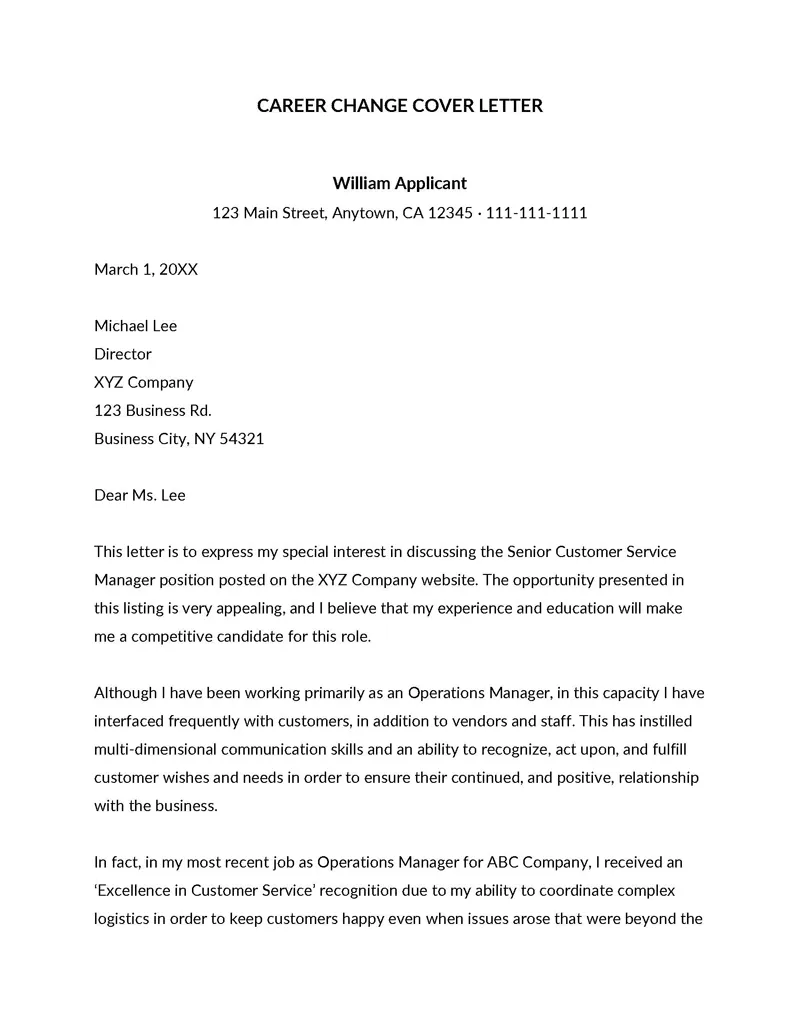
Let your enthusiasm for the new role and industry shine through. Demonstrate your genuine interest in the company and the position. Explain why you’re excited about the opportunity and how you envision yourself contributing to the team. Your enthusiasm will set you apart from other candidates and make you more memorable. Researching the company and discussing how its mission and values align with your own can add to this impact. Passion is a great motivator and will make you stand out.
Tip 4 Research the Company
Before you write your cover letter, thoroughly research the company. Understand their mission, values, and recent projects. Tailor your cover letter to demonstrate your understanding of their needs and how your skills can benefit them. Showing you know what the company does and what it stands for indicates your interest. Reference specific projects or initiatives and explain why they resonate with you. Personalizing your cover letter in this way shows that you care and sets you apart from generic applications.
Tip 5 Proofread and Edit
Proofread your cover letter carefully for any errors in grammar, spelling, and punctuation. Ask a friend or family member to review it as well. Errors can undermine your credibility, so it’s essential to ensure your letter is polished and professional. Ensure the language is clear, concise, and engaging. A well-written, error-free cover letter demonstrates your attention to detail and your commitment to excellence.
Cover Letter Examples to Inspire You
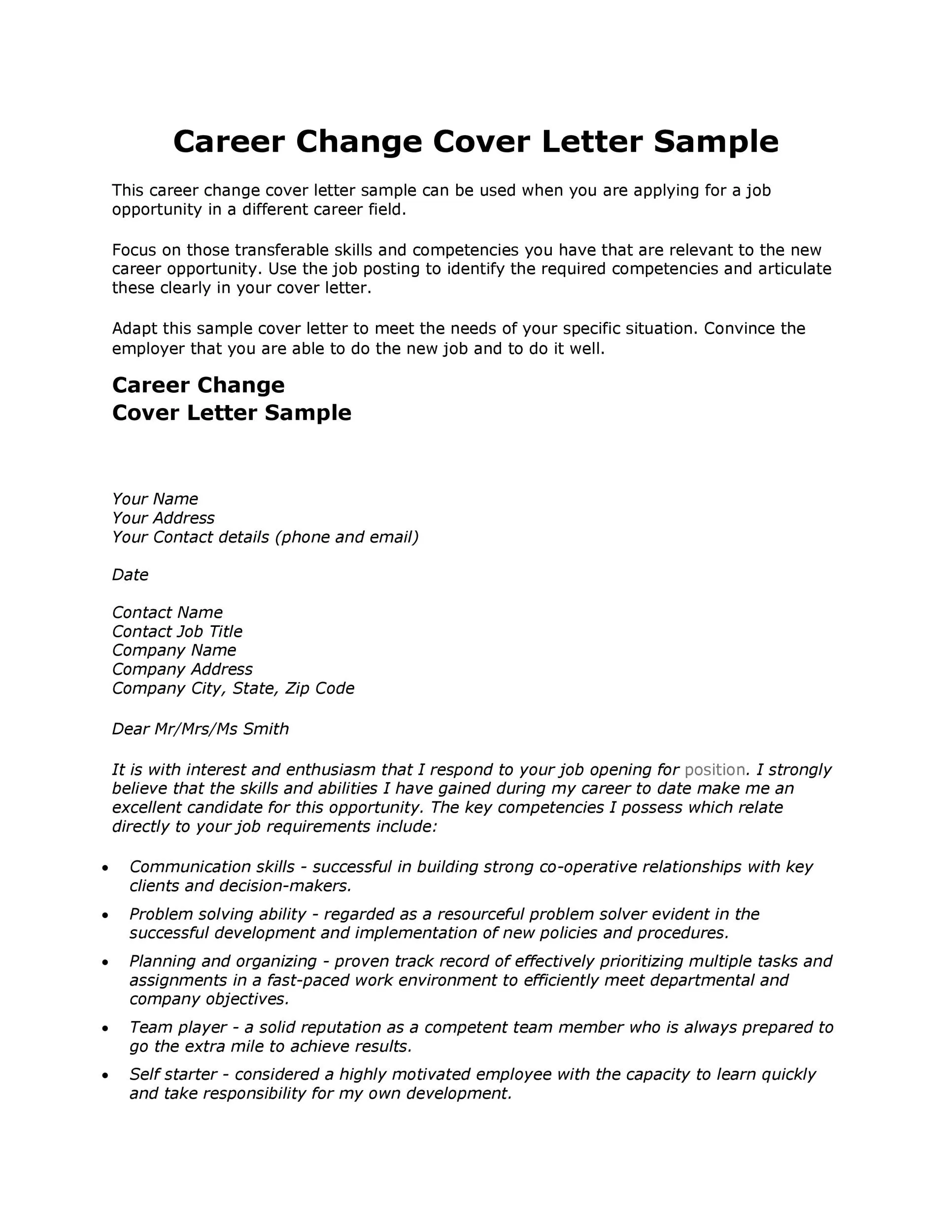
Here are some examples of cover letter openings that demonstrate the tips mentioned to help you create a strong cover letter:
Example 1: A candidate transitioning from marketing to project management.
Dear [Hiring Manager Name],
I am writing to express my interest in the Project Manager position at [Company Name], as advertised on [Platform]. With five years of experience in marketing, leading and managing campaigns, I am eager to leverage my project management skills in a new and challenging environment.
Example 2: A candidate switching from education to human resources.
Dear [Hiring Manager Name],
I am writing to express my enthusiasm for the HR Specialist role at [Company Name]. Having spent eight years in education, I have honed my skills in communication, conflict resolution, and employee development. I am excited to transition my skills and experiences to the HR field.
These examples highlight the candidates’ eagerness to transition and explain their previous experience and the way they can apply those skills in the new role. They are brief, professional, and immediately convey the candidate’s interest in the new role.
